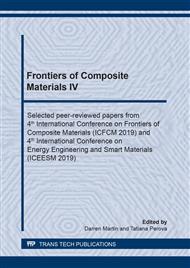p.168
p.174
p.183
p.189
p.197
p.203
p.209
p.214
p.222
Towards Reducing Computational Costs of Finite Difference Time Domain Algorithm in Plasmonic Optical Properties Modelling of Metal Nanoparticles
Abstract:
Finite difference time domain (FDTD) method is a grid-based, robust and straightforward method to model and study the optical properties of metal nanoparticles (MNPs). However, high computational costs of FDTD including simulation time and memory demand mitigate the interest in this algorithm. In this paper, FDTD algorithm is reviewed and reasons of high computational cost requirement in FDTD are investigated. Computational costs are directly characterised by the resolution and size of FDTD grid (known as Yee grid). High FDTD grid resolution is essentially required in MNPs plasmonic modelling to achieve promising accuracy. This results in increasing the dimension of FDTD operational parameters (stored in FDTD matrices) which increases memory and simulation time required and consumed by the algorithm.
Info:
Periodical:
Pages:
203-208
Citation:
Online since:
June 2020
Keywords:
Price:
Сopyright:
© 2020 Trans Tech Publications Ltd. All Rights Reserved
Share:
Citation:


